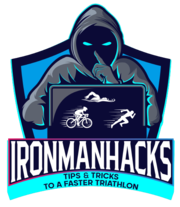The #1 thing to know about how to increase your FTP (functional threshold power) is that consistency and gradual progression are key.
To improve your FTP, you need to consistently train above FTP and gradually increase the intensity and volume of your rides over time.
This can help build endurance, improve your leg strength and power, and ultimately increase your FTP.

But first, what is FTP and how do you determine it?
FTP, or functional threshold power, is a measure of the highest power you can sustain for an extended period of time, usually around one hour. It is an important metric for cycling training and is often used to set training zones and track progress.
There are a few different ways to determine your FTP:
- 20-minute time trial: To do a 20-minute time trial, you ride as hard as you can for 20 minutes, and your average power output over that time period is your FTP.
- Ramp test: A ramp test involves a series of increasingly hard efforts, with the goal of finding the highest power you can sustain for a short period of time. The highest power you achieve during the ramp test is your FTP.
- Field test: A field test involves riding at a steady, hard effort for a set period of time (e.g. 30 minutes) and measuring your average speed or heart rate.
- To do a field test, find a flat or gently rolling course that you can complete in the time you have available (e.g. 30 minutes). Warm up for 10-15 minutes, and then ride as hard as you can for the duration of the test. Try to maintain a consistent pace and effort throughout the test.
- After the test, use a calculator or online tool to estimate your FTP based on your average speed or heart rate. Keep in mind that this is just an estimate, and your actual FTP may be slightly different. It’s a good idea to repeat the field test every few weeks to track your progress.
- If you have access to a heart rate monitor, you can use the following formula to estimate your FTP:
- FTP (watts) = 0.95 x (maximum heart rate – resting heart rate) + resting heart rate
- Keep in mind that this is just a rough estimate, and your actual FTP may be slightly different.
It’s important to note that your FTP can change over time, and it’s a good idea to retest it every few months to track your progress.
Now, here’s a general plan to help you increase your FTP (functional threshold power):
- Determine your current FTP: The first step to increasing your FTP is to determine your current FTP. You can do this by completing a 20-minute time trial or a ramp test.
- Follow a structured training plan: A structured training plan that includes a mix of high-intensity interval training (HIIT), endurance rides, and strength training can help you improve your FTP. Make sure to gradually increase the intensity and volume of your training over time.
- Incorporate HIIT into your training: HIIT involves short bursts of intense effort followed by periods of rest. This type of training can help improve your power and endurance and can be particularly effective for increasing FTP.
- Focus on endurance rides: Long, steady rides at a moderate intensity can help build endurance and improve your FTP. Aim to ride at or just below your FTP for these rides.
- Incorporate strength training: Strength training exercises, such as squats, lunges, and leg presses, can help improve your leg strength and power, which can in turn improve your FTP.
- Recovery is key: Make sure to give your body time to recover between workouts by getting enough sleep, eating a balanced diet, and using techniques such as foam rolling and stretching to help aid recovery.
- Be consistent: Consistently training and gradually increasing the volume and intensity of your rides over time can help improve your FTP.
Great FTP-Building Workouts
Following are a few workouts I give my athletes to build their FTPs. These are definitely best done on the trainer, but of course can be done outdoors on the road, too.
30-sec repeats at 130% FTP
These short-duration, high-intensity repeats help build FTP in a limited time.
Comprised of 30-second repeats, they require less time than long, slow distance riding to increase FTP.

Over-Unders
Here’s where we go above and below our FTP. This one builds both muscular endurance and lactate tolerance, on both psychological and muscular levels.
This workout is really hard for some athletes, so I usually prescribe just two of the builds first, then maybe a few weeks later three of them, and eventually work into all four, as seen in the image below.

VO2 Max!
Like the 30-sec workouts above, these VO2 max efforts are long enough to have an effect but short enough to be doable.
After a build for the warm-up, we do seven 3-minute efforts at 105-109% FTP. The nice thing is they have 4-minute recoveries, making them achievable.
Something like this isn’t as hard as the over-unders, in my opinion, but you’ll still work up a serious sweat doing them.

Remember to always consult with a coach or sports medicine professional before starting a new training program, and listen to your body to avoid overtraining or injury.
If you’d like a custom training plan, you can email me at andrew@ironmanhacks.com and I’d be happy to discuss your exact needs, goals, equipment, history, and more.
Or, you can check out some of the training plans I have for sale in the TrainingPeaks store here.

Leave a Reply
You must be logged in to post a comment.